AP Bio Unit 3: Cell Cycle
1/41
There's no tags or description
Looks like no tags are added yet.
Name | Mastery | Learn | Test | Matching | Spaced |
|---|
No study sessions yet.
42 Terms
Mitotic phase
Also known as M phase
Mitosis and cytokinesis
Shorter than interphase
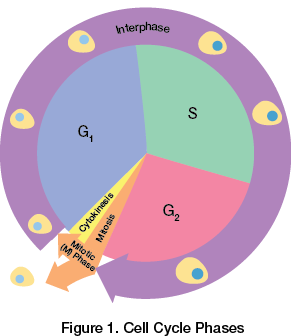
Interphase
G1, S, and G2 phases
Cells spend around 90% of their time here
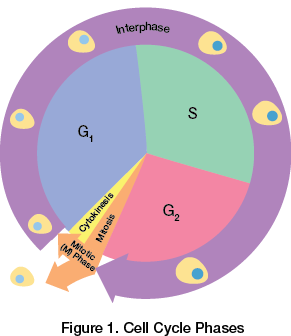
Mitosis
Nucleus divides and DNA is distributed between two daughter cells
The process of duplicated chromosomes separating into two daughter cells
Has five phases: prophase, prometaphase, metaphase, anaphase, and telophase
Cytokinesis
Cytoplasm is divided between the two daughter cells after mitosis
In animal cells, happens by cleavage
In plant cells, happens with a cell plate
G1 phase
“Gap 1”
Cell grows and makes proteins needed for DNA replication
S phase
“Synthesis phase”
Chromosomes duplicate via DNA replication
G2 phase
“Gap 2”
Cell continues to grow and proteins needed for mitosis are synthesized
Timing of Cell Division
Can vary between cell types and species
E.g. skin and esophageal cells divide frequently, liver cells only do so to repair damaged tissue, and nerve cells don’t divide at all
G0 phase
Cells that never divide (or are temporarily not dividing) are in this phase
E.g. nerve cells
Cells will enter this phase if they do not make it through the G1 checkpoint
Genome
All of a cell’s genetic material contained in its nucleus
Genes
Units within the genome that code for certain traits
Chromatin
DNA and proteins (not necessarily condensed)
Chromosomes
Condensed DNA and proteins
Made up of two identical sister chromatids held together by the centromere
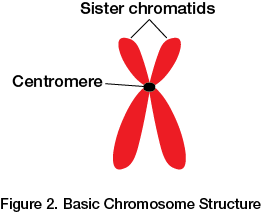
Chromatid
One of two identical halves of a chromosome that has been replicated in preparation for cell division
Gamete
Reproductive cells
Have only half as many chromosomes as somatic cells and only one copy of each chromosome
Somatic cells
Non-reproductive cells
Have two copies of each chromosome
Prophase
Chromatin condenses into chromosomes
Nucleolus disappears
Mitotic spindle begins to form from microtubules extending from the centrosome
In animal cells, this involves the centrioles, but not in plant cells
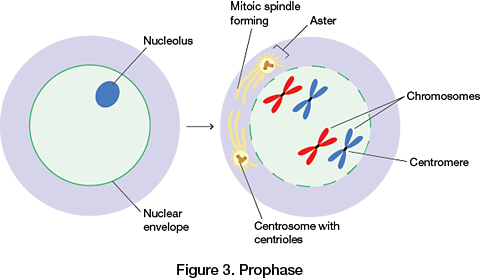
Aster
Short microtubules on the non-spindle side of the centrosome
Prometaphase
Nuclear envelope breaks apart
Spindle microtubules attach to proteins on the centromeres of the chromosomes called kinetochores
Each chromosome has two kinetochores, and they each attach to a microtubule from a different pole
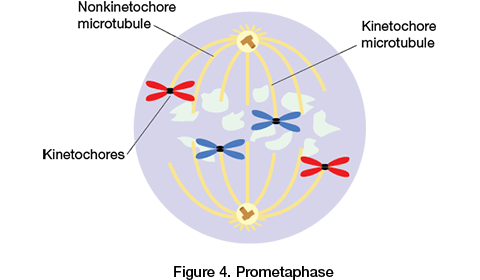
Metaphase
Mitotic spindle is complete
Chromosomes align along the metaphase plate (an imaginary line in the center of the cell)
Asters extend the cell membrane
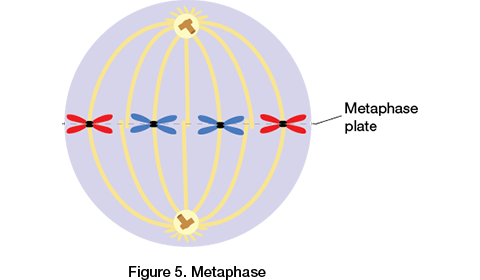
Anaphase
The proteins holding the sister chromatids together deactivate
Kinetochore microtubules pull the sister chromatids apart toward opposite poles of the cell
Nonkinetochore microtubules elongate the cell
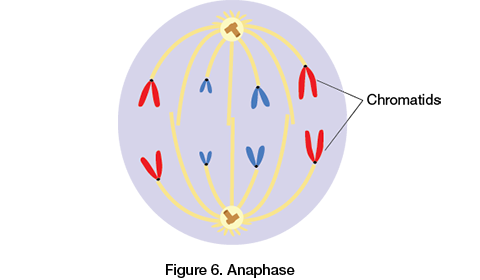
Telophase
Daughter nuclei form
Chromosomes begin to uncoil
Cytokinesis occurs:
Animal cells separate at the cleavage furrow
Plant cells begin forming the cell plate which fuses with the cell membrane and will become a new cell wall
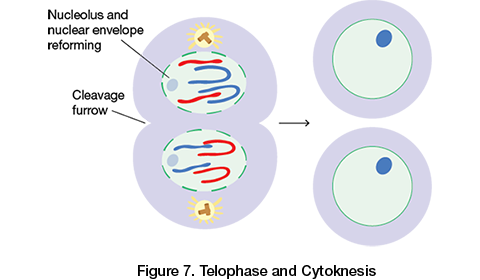
Binary fission
How prokaryotes and single-celled eukaryotes (e.g. amoeba) divide
Chromosomes replicate and move to opposite ends of the cell, which then separates into two identical daughter cells
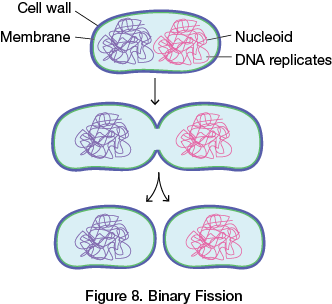
G1 checkpoint
Most important checkpoint in mammals
Occurs at the G1/S transition
This is the primary point where cells decide whether or not to divide
Checks for:
Size (is it big enough to divide?)
Nutrients (does it have enough nutrients or energy reserves?)
Molecular signals (is the cell receiving positive cues (e.g. growth factors) from neighboring cells?)
DNA integrity (is any of the DNA damaged?)
If a cell doesn’t pass through this checkpoint, it will enter G0 phase
A transcription repressor protein is degraded, allowing genes to be expressed that allow the cell to progress to DNA replication
G2 checkpoint
Occurs at the G2/M transition
Checks for:
DNA integrity (is any of the DNA damaged?)
DNA replication (was the DNA completely copied in the S phase?)
If errors or damage are detected, the cell will pause the cycle here and try to repair the damage or complete replication
If the damage is irreparable, then the cell may undergo apoptosis (programmed cell death) to prevent the damaged DNA from being passed on.
Triggered by MPF

M checkpoint
At the transition from metaphase to anaphase
Also known as the spindle checkpoint
Makes sure that all sister chromatids are correctly attached to spindle microtubules and lined up at the metaphase plate
The cell will look for “straggler” chromosomes and pause mitosis until they are captured
Results in daughter cells with the right number of chromosomes
Why are cell cycle control systems necessary?
To ensure that the cell is replicating and dividing properly.
For example, if the proteins regulating cell division aren’t functioning properly, then this may lead to cancer.
Where are cell cycle controlling signaling molecules located?
The cytoplasm
Cyclin-dependent protein kinases (CDKs)
Proteins that are present throughout the cell cycle
Usually, they’re inactive. They are activated when a cyclin protein binds to them
Maturation-promoting factor (MPF)
A CDK-cyclin complex that forms during the S and G2 phases when cyclin levels rise
It decreases during mitosis
This complex is primarily responsible for allowing the cell to progress past the G2 checkpoint and begin mitosis
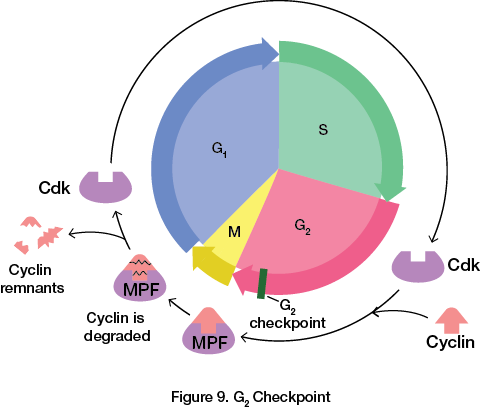
Cyclins
Proteins that are present at fluctuating levels at different times throughout the cell
Bind to CDKs to help the cell progress through cell cycle checkpoints
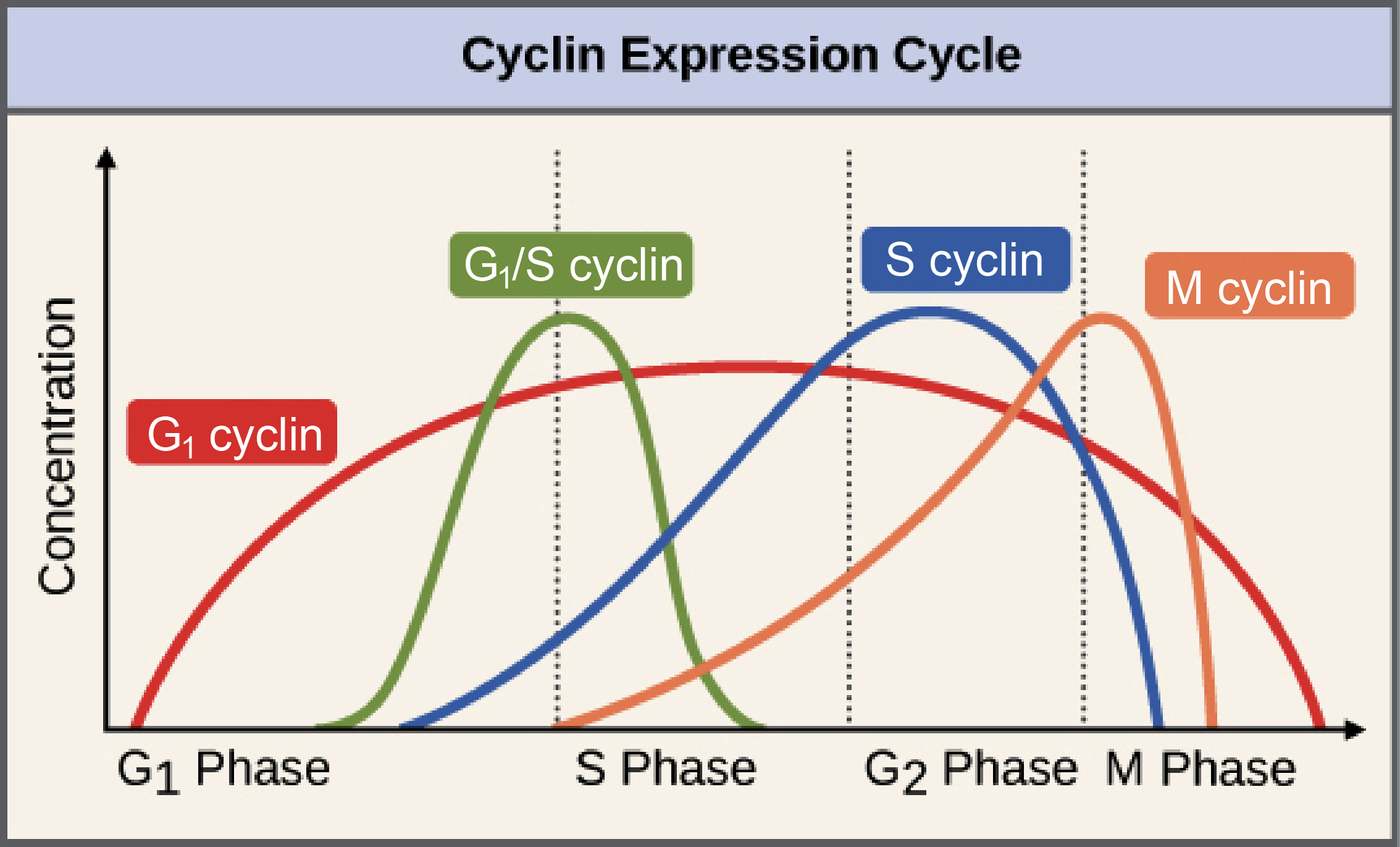
Cancer
Uncontrolled cell growth
Cancer cells often exhibit traits like:
excessive cell division
unusual numbers of chromosomes
abnormal cell surface
detachment from neighboring cells and the ECM
ability to secrete molecular signals that attract extra bloodflow
Detachment and extra bloodflow for nutrients allow the cells to spread to other area
Growth factors
Proteins that stimulate cell division
Cancer cells that divide without these
Density-dependent inhibition
Normal cells stop growing when they become too crowded
Cancer cells do not display this and will overlap and clump
Radiation therapy
Damages the DNA in cancer cells
Cancer cells lack the ability to repair this damage
Halts the cell cycle at the G2 or M checkpoints
Chemotherapy
These treatments are toxic to actively dividing cells
E.g. it might freeze mitotic spindles and prevent mitosis from progressing beyond metaphase
E.g. it might prevent DNA from replicating
Zygote
A diploid fertilized egg cell
Through mitosis, a zygote can divide and grow into a multicellular organism
First thing a zygote does?
Divides until there are lot of cells
Cell differentiation
During embryonic development, cells become specialized in structure and function
They are organized into tissues and organs
Morphogenesis
Development of the shape and form of tissues and organisms
Cytoplasmic determinants
Maternal substances in the egg cell’s cytoplasm (e.g. proteins, mRNA, organelles)
These are distributed to daughter cells during early mitotic divisions
The cytoplasm divides without making more cytoplasm, so these cytoplasmic determinants are different from cell to cell
Different cytoplasmic determinants regulate gene expression during cell differentiation
Induction
Gene expression is controlled by environmental signals between cells
E.g. contact between cell surfaces and secretion and reception of growth factors
Creates regions of differentiated cells that can then become tissues and organs (morphogenesis)